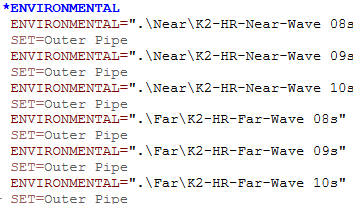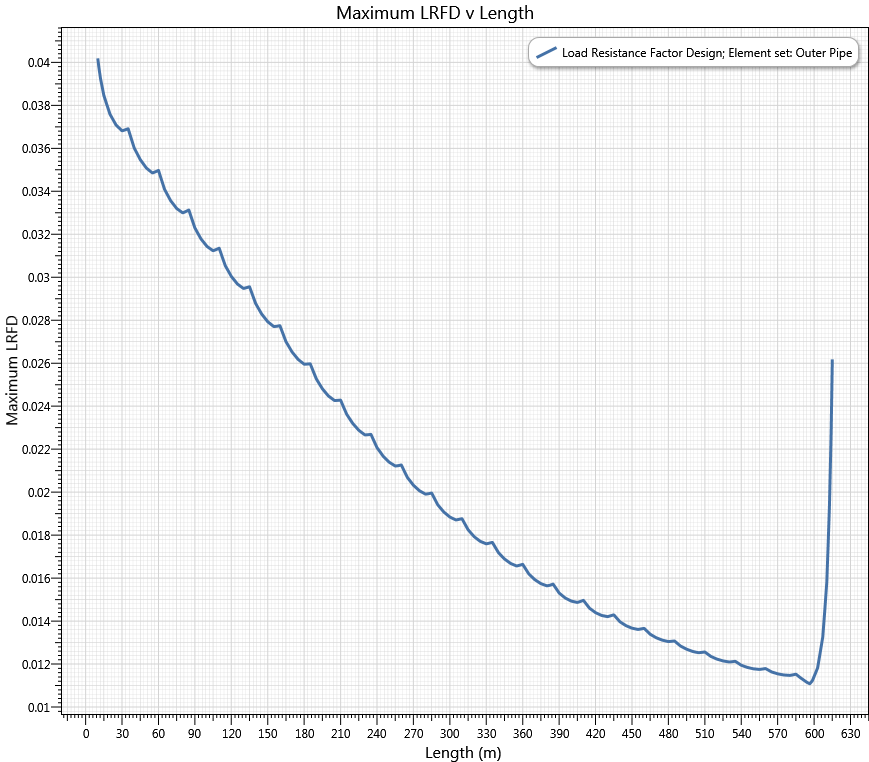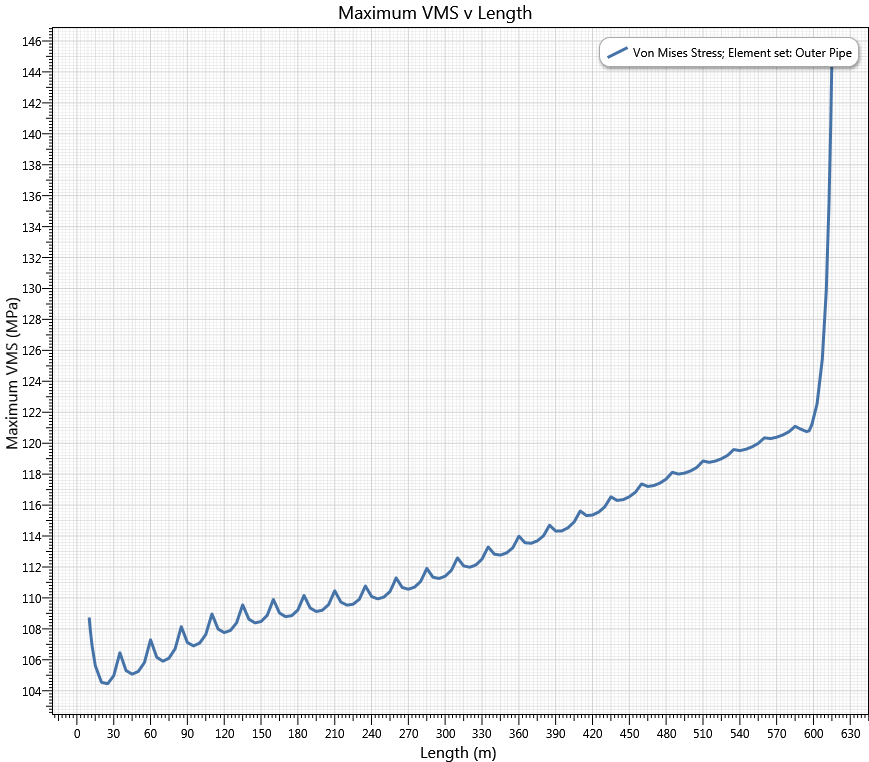Flexcom allows for the post-processing of analysis results using three possible design codes including DNV-OS-F201 (Dynamic Risers), DNV-OS-F101 (Submarine Pipeline Systems), API STD 2RD (Dynamic Risers for Floating Productions Systems) and ISO-13628-7 (Completion/workover riser systems). While all the codes differ slightly in the how results are calculated and presented, the operation of each are very similar in nature. The code checking module ($CODE CHECKING) is comprised of four required keywords including *CODE, *ENVIRONMENTAL, *MATERIAL, and *SECTION PROPERTIES. This section will seek to explain how these keywords to perform a unity check in DNV-OS-F201.
The first step in performing code checking post-processing is to select a code by which the result should be post-processed. Generally, risers are post-processed with DNV-OS-F201 or API STD 2RD, pipelines are checked against DNV-OS-F101 and completion/workover risers are checked against ISO-13628-7. While it is only possible to post-process using one design code at a time, API STD 2RD employs DNV-OS-F201's Load and Resistance Factor Design (LRFD) for calculation Method 3 making comparison between the codes readily available if desired. Specification of the design code is done using *CODE.

![]()
Code Selection
DNV uses the notion of functional and environmental loads in the determination of Von Mises Stress (VMS), Working Stress Design (WSD) and Load and Resistance Factor Design (LRFD). Environmental loads are those loads due to environmental conditions. These include waves, current, wind, ice and earthquake. A functional load is defined as load caused by the existence of the structure and by operation and handling of the system excluding pressure. For further explanation of these loads, refer to DNV-OS-F201. In Flexcom, the environmental load is usually considered to be the dynamic analysis, and the functional load is typically a static analysis, either static or offset. Flexcom will assume the analysis preceding the environmental load case is the functional load unless otherwise specified. *ENVIRONMENTAL is used to define these environmental and functional loads along with the design factor (applicable only for API and ISO code checks), the collation option, and element set name.


Environmental Specification
DNV and API both employee a number of material specific empirical properties of the material in the calculation of the material utilisation. *MATERIAL is used to specify relevant structural material properties.


Material Property Specification
Section Properties
*SECTION PROPERTIES is used to specify which material corresponds to the which set. If a diameter or thickness is not specified, that will be assumed to be consistent with those specified geometeric sets in the static file.

![]()
Section Property Specification
Results from the code checking post-processing are presentation in a number of ways. For every section, a plot is generated for LRFD, WSD, and von Mises stress. The LRFD and WSD values are both utilization values.

Load and Resistance Factor Design Utlisation

Working Stress Design Utilisation

von Mises Stress
Additionally, maximum utilisations and stresses are summarized in the output file.

Collated Results